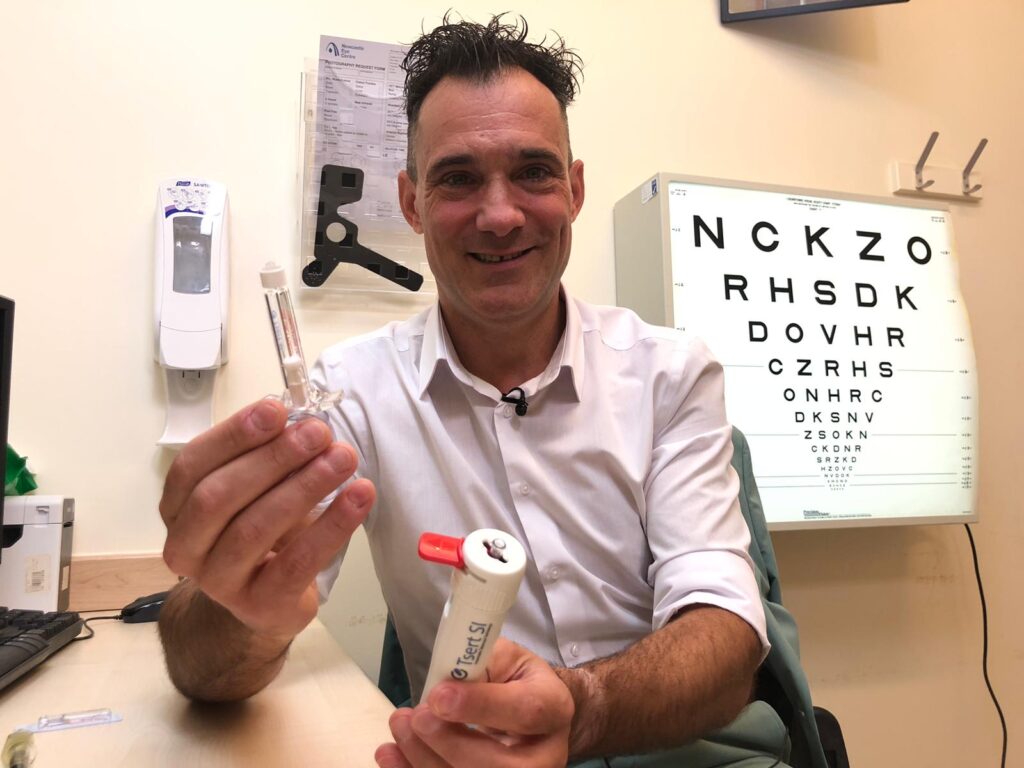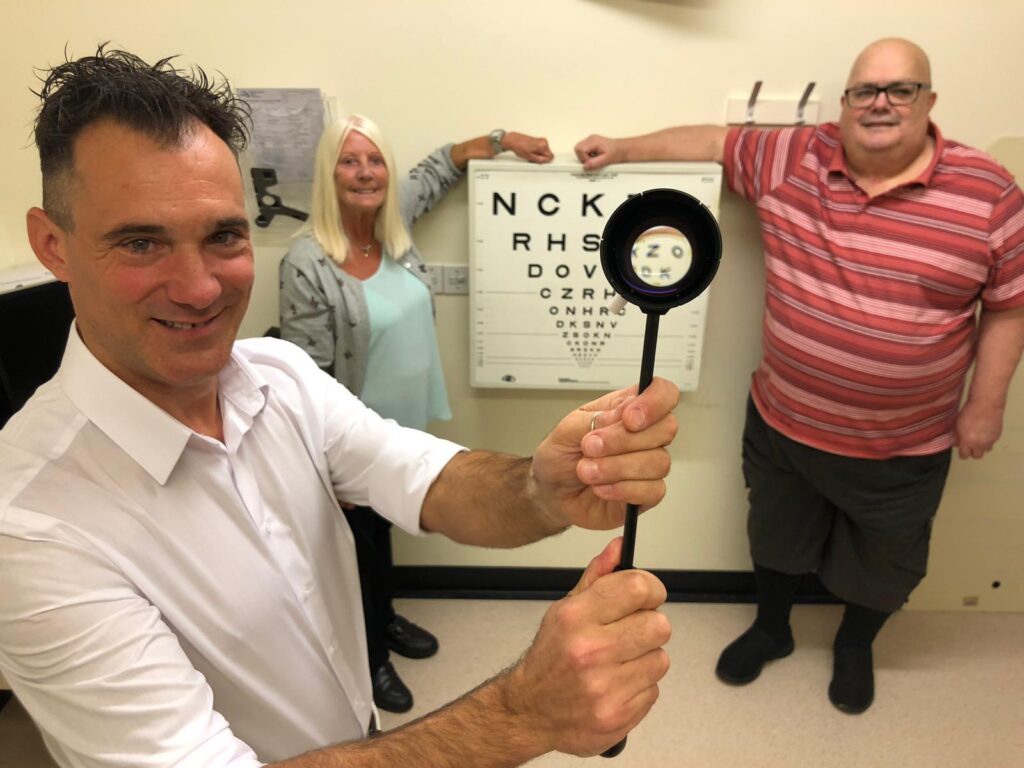EYE surgeons at Newcastle hospitals are the first in the UK to carry a pioneering implant for patients with late-stage age-related macular degeneration (AMD).
Consultant Vitreoretinal Surgeon and theatre lead for ophthalmology at the Royal Victoria Infirmary, Mr. Sandro Di Simplicio, successfully implanted a miniature telescope which enlarges objects in the centre of the visual field and, essentially, gives patients back their vision and freedom.
The tiny telescope – just 10.8 mm in diameter – magnifies images so they can be seen by the intact parts of the retina around the macula – which is responsible for central vision, most of our colour vision and the fine detail of what we see – in the back of the eye.

Currently, around 1.5 million people in the UK live with macular disease. AMD is the most common condition – and biggest cause of sight loss – affecting the macula, which is the most important part of the retina at the back of the eye.
When a person develops AMD, light-sensitive cells in the central area of vision – the macula – become damaged and stop sending images to the brain, resulting in a ‘dark spot’ in central vision which grows until someone is virtually blind.
This new medical device – the Samsara Vision’s SING IMT™ miniature implantable telescope – is designed to reduce the effects of the ‘blind spot’ of AMD, allowing people living in the final stages of this eye disease to see clearly again.
As part of this day-case procedure, which takes around 15-20 minutes, a small incision is made into the eye, similar to cataract surgery, and the telescope is then implanted. When the patient recovers from surgery, they work closely with a low-vision specialist and occupational therapists to learn how to use their regained vision.
The patient’s rehabilitation process is over several consecutive appointments, which can also be done at the Newcastle Eye Centre.
“It is fantastic that we are the first hospital in the UK to be able to deliver this treatment to patients with end stage macular degeneration. It promises to be life-changing for those who are eligible to have this procedure,” said Mr Di Simplicio.
“Treatment options for patients with late-stage AMD have, until now, been very limited and the impact on an individual and their wider friends and family can be huge.
“This procedure is transformative and we know from other studies carried out across the world that those treated can, for example, see the faces of family and friends again, read, watch TV, paint, knit or work in the garden. We’re delighted the ophthalmology team here at Newcastle Hospitals are part of this.”
Enrolment criteria are very strict, but all those who are suitable will be offered a discussion with the clinician to check if this treatment is a viable option.
Further details can be found at https://singimt.samsaravision.com/en/sing-imt.
Our patients
Paul Dobson became the first patient to receive the implant in one of his eyes and had the procedure in March, after living with AMD for several years.
The 69-year-old, who is from Prudhoe in Northumberland, is still adapting to life with the device but considers himself extremely fortunate to have received it.
“I’ve had AMD for six years but last year had to give my driving licence up because of my condition,” he said.

“And then I met this doctor who told me about the device although it was quite a surprise to find out I was the first person in the to have this telescopic lens,” he said.
“I’m still adapting but everything’s bigger and I haven’t got a blind spot. You’re sort of taking somebody who’s half blind, who will be able to see again.”
Another patient who was amongst the first to receive this treatment is Janice Morris from South Shields, who says “a million thank yous” would not be enough to sum up what she has regained.
Her advancing AMD had left her registered blind and unable to recognise the faces of neighbours, family and friends and she was pessimistic about the future.
“To be honest with you, I’ve got my life back,” Ms Morris said. “I can do really pretty much what I want: In the house, I can make my own coffee where before the sugar was all over the floor.
“When I was registered blind I thought that’s it – I’m never going to be able to see anybody again, that was how bad it was. I wasn’t able to go out on my own – I’m a very proactive person who likes to be out and about and I was literally living in one room of the house.
“The last couple of months have been an amazing journey – it’s lovely to be able to see people’s faces again and I feel I can do anything I put my mind to.”
